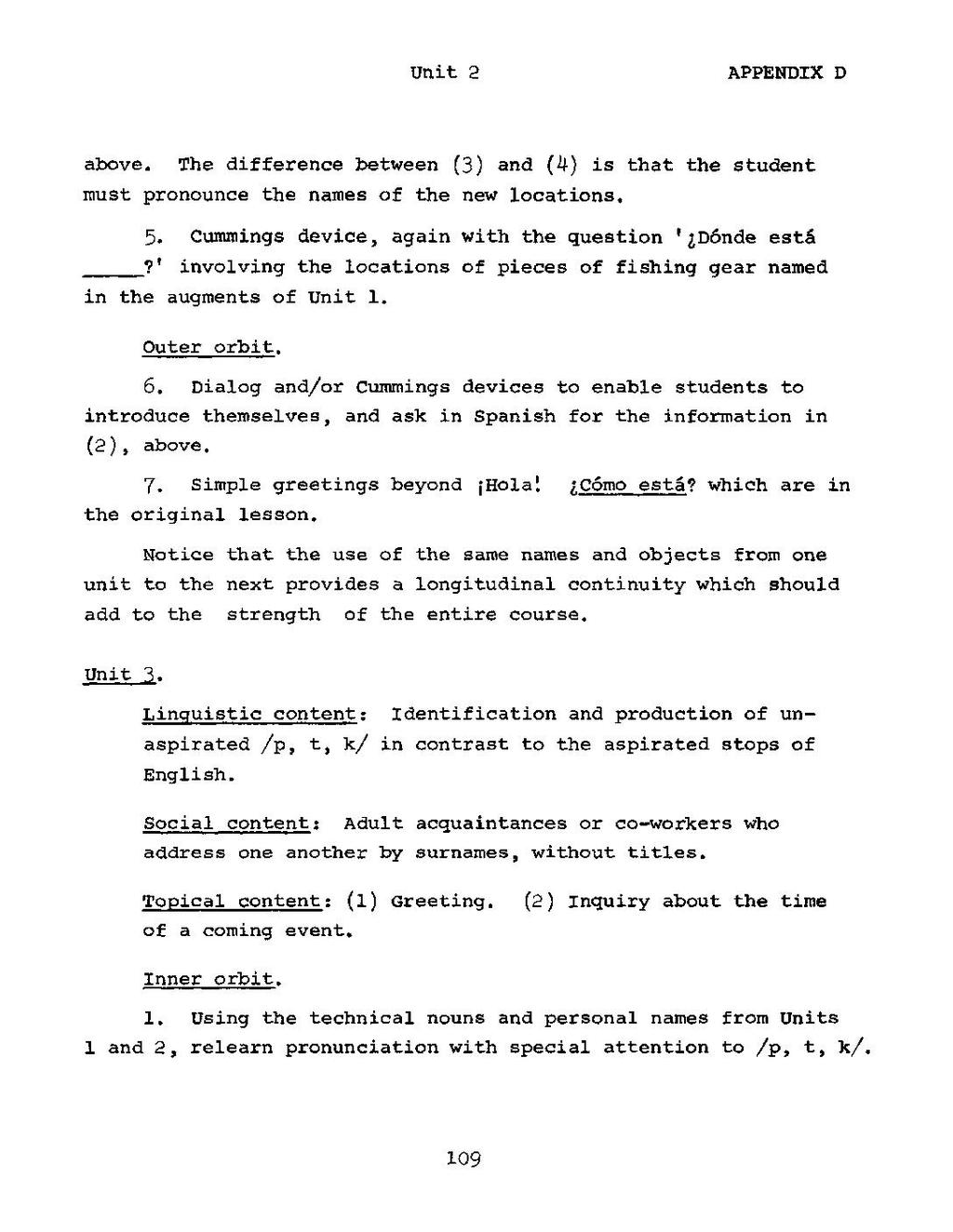above. The difference between (3) and (4) is that the student must pronounce the names of the new locations.
5. Cummings device, again with the question '¿Dónde está _____?' involving the locations of pieces of fishing gear named in the augments of Unit 1.
Outer orbit
6. Dialog and/or Cummings devices to enable students to introduce themselves, and ask in Spanish for the information in (2), above.
7. Simple greetings beyond ¡Hola! ¿Cómo está? which are in the original lesson.
Notice that the use of the same names and objects from one unit to the next provides a longitudinal continuity which should add to the strength of the entire course.
Unit 3.
Linguistic content: Identification and production of unaspirated /p, t, k/ in contrast to the aspirated stops of English.
Social content: Adult acquaintances or co-workers who address one another by surnames, without titles.
Topical content: (1) Greeting. (2) Inquiry about the time of a coming event.}}
Inner orbit.
1. Using the technical nouns and personal names from Units land 2, relearn pronunciation with special attention to /p, t, k/.
109
